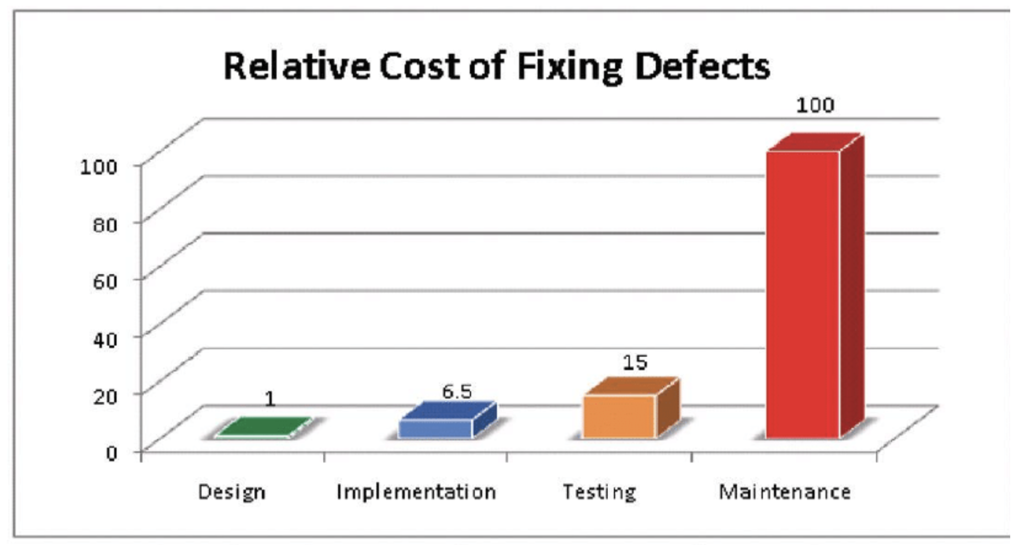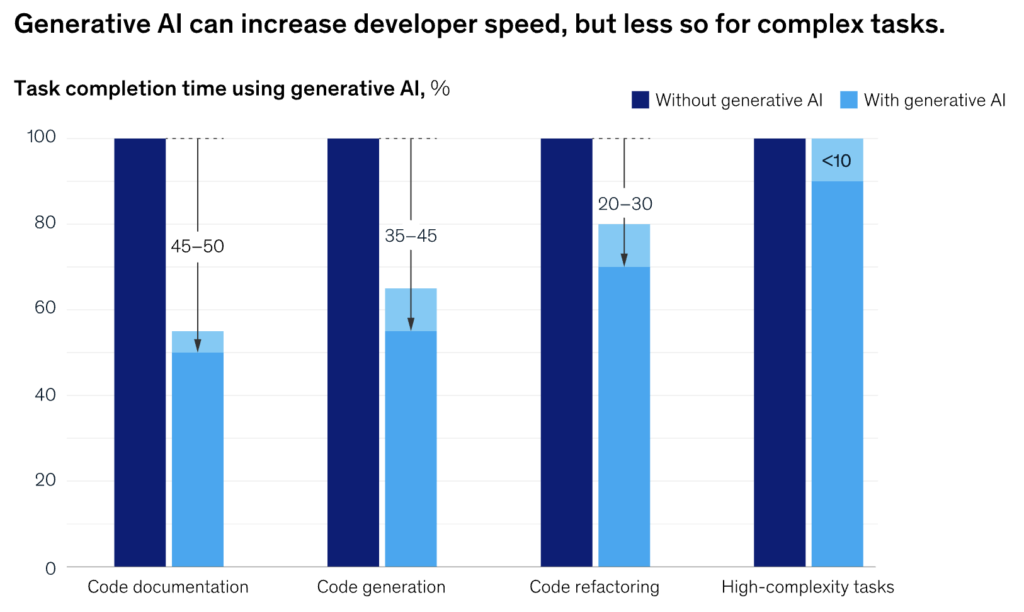A recent article in the Wall Street Journal warned of the impact of technical debt in deployed software’s impact on the US economy. The article posits that technical debt, accumulating from outdated systems and quick fixes, poses significant security risks and stifles innovation. An estimate suggests the cost to address technical debt in the US is estimated at $1.52 trillion, with broader impacts costing the U.S. $2.41 trillion annually.
A company (potential customer) saddled with technical debt from previously deployed software solutions represents a challenge and opportunity for SaaS providers. Because of the constraints of these systems, businesses need help leveraging new innovative technology. Still, middleware and integration capabilities available in cloud-based solutions allow new technology to be adopted without the cost of migrating from legacy systems reducing significant friction from SaaS adoption.
The SaaS revolution effectively transfers the responsibility of maintaining technical debt from the client to the provider. The SaaS industry has mastered deploying many cloud solutions seamlessly integrating with legacy systems via cloud-based integration platforms (iPaaS).
However, amidst the intensely competitive landscape of SaaS providers, technical debts accumulate within cloud applications, transferring the ownership of managing this debt to the vendors. Speedy innovation, outsourced development, offshored units, and next-gen AI all contribute to this issue.
Why is Technical Debt Important?
To a software developer or vendor, technical debt signifies the upcoming costs of extra rework resulting from quick, temporary solutions instead of more fruitful, albeit lengthier, methods.
This notion brings attention to the exchange between hasty development and the software’s long-term manageability and scalability. Estimating the cost of technical debt is crucial for making informed decisions about when and where to invest in refactoring or revising parts of the software. Macroscopically, the cost of fixing a customer-reported defect is orders of magnitude higher than prior to release.

How to Gauge and Handle Technical Debt
There are models and techniques to estimate the cost of technical debt for software vendors by evaluating its impact on maintenance expenses, future development efforts, and system reliability. They may use metrics like the number of known defects, complexity measures, and code churn to quantify debt. This may include the costs of potential downtime, reduced productivity, and increased failure risk.
Models like the SQALE Methodology, CAST Software’s Application Intelligence Platform (AIP), the Technical Debt Ratio, and SEI’s Framework for Software Product Line Practice offer quantitative ways to understand, measure, and manage technical debt. Vendors like SonarSource offer code reviews and analytics using the SQALE methodology.
The SaaS revolution effectively transfers the responsibility of maintaining technical debt from the client to the provider. The SaaS industry has mastered deploying many cloud solutions seamlessly integrating with legacy systems via cloud-based integration platforms (iPaaS).
Developing for Maintainability
The first step to managing technical debt is to implement practices and tools that will prevent its introduction to begin with. Reputable articles suggest using clear code documentation, meaningful names for code elements, and keeping documentation updated to ensure software maintainability.
Refactoring refers to restructuring existing code without changing its external behavior to improve nonfunctional attributes, such as readability and maintainability. Companies often consider several factors when determining their refactoring strategies, including the impact on the current development schedule, potential risks and benefits, the extent of technical debt, and the overall goals for the software’s architecture and performance. A critical aspect is balancing immediate development needs against long-term software health and agility.
- Test-Driven Development (TDD): where refactoring is a key step in the red-green-refactor cycle
- Continuous Integration/Continuous Deployment (CI/CD): Automate builds, testing, and deployment to catch and fix issues early, preventing debt accumulation. scheduling regular code reviews with refactoring goals
- Pair Programming: to share refactoring techniques and practices among team members.
These methods ensure refactoring becomes a regular part of the development workflow, promoting code health and maintainability alongside new feature development.
Version Management
While fixing bugs and adding features are crucial aspects of software development, a proactive approach is necessary to handle technical debt and prevent it from escalating. This is where strategic software versioning and release methods come into play. By employing these techniques, developers can gain greater control over code changes, manage dependencies effectively, and minimize the risks associated with technical debt. Key approaches include:
- Semantic Versioning (SemVer): This structure organizes version numbers as MAJOR, MINOR, and PATCH to clarify compatibility breaks, new features, and bug fixes.
- Feature Flags/Toggles: This isolates new or in-development features behind flags for controlled rollout and quick rollback.
- Branch by Abstraction: This creates an abstraction layer to refactor sections of code while minimizing disruptions to the overall system.
- Trunk-Based Development: This encourages frequent, small commits to a single main branch.
- Release Branching: This stabilizes releases on dedicated branches.
The Impact of Generative AI on Technical Debt
The effect of Generative AI on technical debt in software development is a complex issue, with experts having divergent views on whether it will worsen or alleviate this perennial challenge.

While some argue that the rapid integration of Generative AI tools without fully contemplating their long-term implications might escalate technical debt, others posit Generative AI and advanced testing tools as promising solutions to manage and potentially reduce technical debt. Where most of the leverage in Gen AI is in the documentation and basic code generation, developers can now leverage AI to support refactoring efforts as well (See McKinsey study). By accelerating the development process and enabling efficient code testing and debugging, these technologies could support software teams in managing technical debt more effectively, leading to swifter innovation cycles and a lower risk of future system failures.
Actionable Insights
The impact of technical debt on the growth of SaaS providers is a multilayered problem that requires strategic management. It is essential to:
- Gain a clear understanding of technical debt and its potential impact on your software development process and business operations.
- Implement appropriate measurement models and manage technical debt effectively to reduce costs and ensure long-term software maintainability.
- Make thoughtful decisions when integrating new tools and technologies, such as Generative AI, to prevent an unnecessary increase in technical debt.
- Build long-term sustainment strategies, such as semantic versioning, feature flagging, and CI/CD, to manage technical debt proactively and prevent its accumulation.
- Consider upskilling your team and adopting modern development techniques to keep pace with fast-evolving technology and software development practices.
By taking these actions, SaaS providers can turn the technical debt challenge into an opportunity for growth and innovation.
- Mims, Christopher, “The Invisible $1.52 Trillion Problem – Clunky Old Software” Wall Street Journal 2024
- McConnell, Steve. “Technical Debt.” Construx.
- Fowler, Martin. “Code Documentation.” MartinFowler.com.
- Beck, Kent. “Test-Driven Development.” TestDriven.io.
- Duvall, Paul M. “Continuous Integration.” ThoughtWorks.
- Williams, Laurie; Kessler, Robert R. “All I Really Need to Know about Pair Programming I Learned In Kindergarten.” Communications of the ACM, May 2000.
- Preston-Werner, Tom. “Semantic Versioning 2.0.0.” SemVer.org
- “Trunk-Based Development.” TrunkBasedDevelopment.com.
- McKinsey, “Unleashing Developer Productivity with Generative AI” 2023
- Doerrfield, Bill “Will the Rise of Generative AI Increase Technical Debt?” DevOps.com
- Hernadez, Jorge, “Tackling Technical Debt with Generative AI”, Encora
- SonarSource. “SonarSource: Continuous Code Quality.” SonarSource. Accessed on [Date].
- Beck, K. Test Driven Development: By Example. Addison-Wesley, 2003. Amazon.
- Martin, R. C. “Clean Code: A Handbook of Agile Software Craftsmanship.” Prentice Hall, 2008. InformIT.
- Fowler, M. “Refactoring: Improving the Design of Existing Code.” Addison-Wesley Professional, 2018. Martin Fowler.
- Preston-Werner, T. “Semantic Versioning 2.0.0.” Semantic Versioning. 2020. Accessed on [Date].
- Hüttermann, M. DevOps for Developers. Apress, 2012. Apress.


